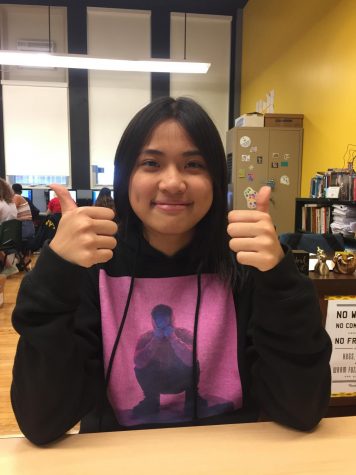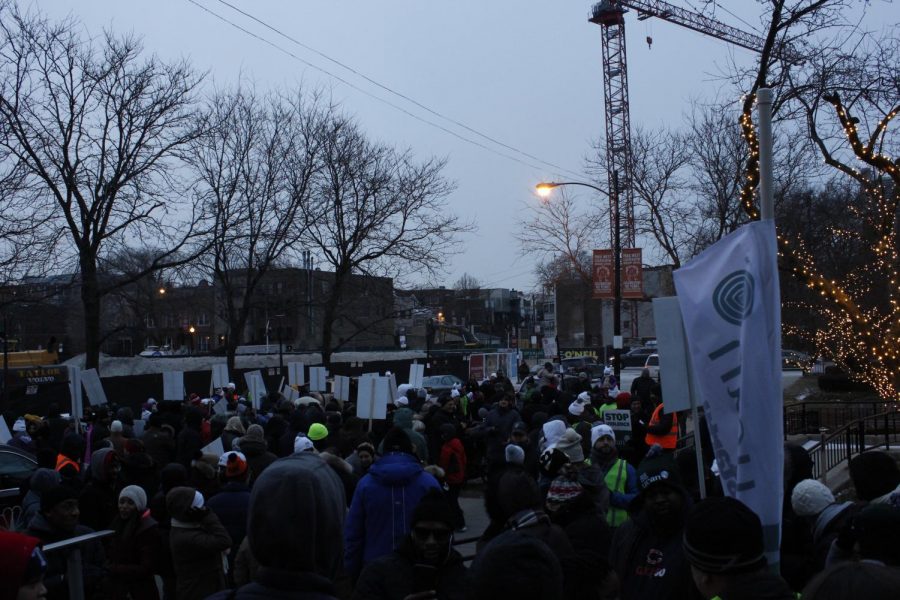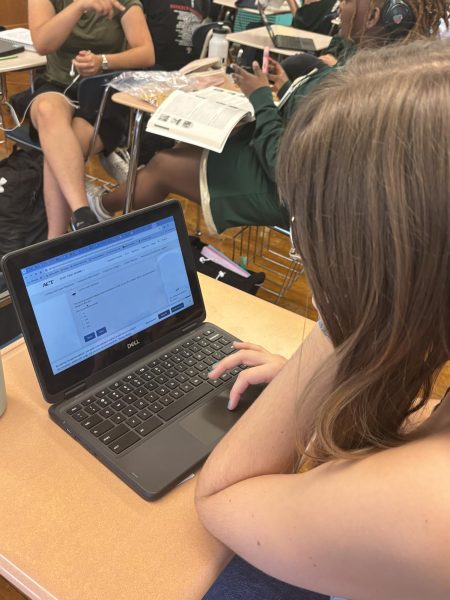UCAN advocates violence prevention with Polar Peace March
From the top of the church steps, protesters head down Orchard St., holding signs and banners with UCAN.
Protesting near northern Lincoln Park on MLK day, three hundred voices in the freezing cold shouted for the future of Chicago’s youth, “I don’t know what you’ve been told, violence hurts both young and old!”
On Jan. 14, the Uhlich Children’s Advantage Network (UCAN), organized their fourth annual Polar Peace March protest to help youth in Chicago have a better future.
UCAN started 148 years ago as an organization to help the children of fallen soldiers in the Civil War, partnering with the St. Paul’s United Church of Christ.
Before the march inside St. Paul’s Church, located at 2335 N. Orchard St., Pastor Jeff Carlson motivated the crowd by cracking a charismatic joke every now and then. Teen speakers who partnered with UCAN gave speeches, including Jake Nitzsche, Div. 953, who read Martin Luther King’s “I have a Dream.”
Nitzsche has been involved with UCAN’s youth planning council for three years, and was on the Polar Peace March council this year.
In addition to the protest, UCAN has hosted a youth peace summit for three years. For the past two, it has been held at the Drost Harding campus in North Lawndale.
According to Nitzsche, UCAN tries to get as many high-schoolers from the Chicagoland area to discuss topics such as gender and sexuality, developing healthy relationships and improvements on race and cultural relationships along with focusing on violence prevention and leadership skills.
Nitzsche said he believes that the lack of communication between people of different races and cultural backgrounds is a big contributor to youth violence — which is the reason why the summit is held.
“They can’t discuss and they can’t share ideas,” Nitzsche said.“Those kinds of conflicts are caused by stereotypes and certain opinions that people formulate, which has [created] inherent violence between different communities, or even within the same communities where people categorize these little sections between neighborhoods.”
Beginning at St. Paul’s and continuing out to Clark Street, cars beeped to show solidarity with the protesters. “Stop the violence, spread the word!” they chanted.
UCAN handed out free touchscreen gloves and hats to everyone; the church handed out soup and crackers to warm everyone up.
They also handed out “How Long Will I Cry?”, a book compiling events of youth violence published by Big Shoulders Books.
Ann Kniola, Associate Director of Development at UCAN, stood on a large stage in the middle of the soup kitchen and announced the winners of raffles for people who fundraised certain amounts. The winning prizes ranging from Cubs tickets to an Amazon Echo. $51,596 was raised from their goal of $50,000.
Jan Bail, the founder and creator of the Polar Peace March, said that she founded the march because despite the fact that she lives a very privileged life, “it’s heartbreaking to know that there are children that can’t walk in their streets safely.”
Norman Kerr, Vice President of UCAN under the violence prevention and intervention services, is a Lane alum and has worked for UCAN for more than five years. Before Kerr worked with UCAN, he worked with many other organizations to help Chicago’s youth, choosing to work with UCAN because of their focus on childhood trauma.
Despite living in a neighborhood with less violence, Kerr still saw violence throughout the city. “It was enough violence to know that it was something that shouldn’t be normal,” Kerr said.
“Just hearing stories from people from across the city, especially when you went to Lane, there was almost an expectation of violence.” Kerr said.
Violence impacts education throughout the city. “There were several people that came to Lane with our freshman class that didn’t make it to senior year for whatever reason, they dropped out, they joined the gang lifestyle, and the same thing in my neighborhood as well,” Kerr said.
Kerr shared a story about someone who went to his grammar school who went on to attend Lane. His friend was a grade above him and was smart and a great athlete.
“He had the world, you know?” Kerr said. Despite this, his friend dropped out.
“That was part of my motivation to get into social services because there are young people who are talented and smart, but they just can’t get over the hump because of the challenges that they have faced in their past, trauma and things like that,” Kerr said.
Violence nowadays has heightened and escalates much more quickly, according to Kerr.
In order to help advocate against youth violence, Nitzsche says that Lane students could help by getting involved with the youth summit this November or attending the next Polar Peace March.
“We would love to see more people from Lane, representing Lane,” Nitzsche said.
Your donations directly fund the Lane Tech student journalism program—covering essential costs like website hosting and technology not supported by our school or district. Your generosity empowers our student reporters to investigate, write, and publish impactful stories that matter to our school community.
This website is more than a publishing platform—it's an archive, a research tool, and a source of truth. Every dollar helps us preserve and grow this resource so future students can learn from and build on the work being done today.
Thank you for supporting the next generation of journalists at Lane Tech College Prep!

Mytam Vo is a current senior and is The Warrior's art editor. Apart from being the art editor, she enjoys making her own art and is learning how to play...



